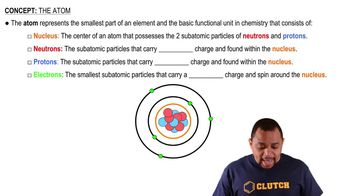Textbook Question
Write the molecular and structural formulas for the compounds represented by the following molecular models:
 Verified step by step guidance
Verified step by step guidance



Write the molecular and structural formulas for the compounds represented by the following molecular models:
Write the molecular and structural formulas for the compounds represented by the following models:
Fill in the gaps in the following table: Symbol 59Co3+ Protons 34 76 80 Neutrons 46 116 120 Electrons 36 78 Net charge 2+
Each of the following elements is capable of forming an ion in chemical reactions. By referring to the periodic table, predict the charge of the most stable ion of each: c. K
Using the periodic table, predict the charge of the most stable ion of the following elements: d. Br
Using the periodic table, predict the charge of the most stable ion of the following elements: e. Se